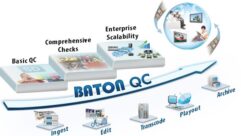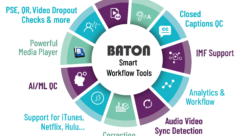What Can Open-platform Systems Offer the Industry?
Mar 13, 2008 4:45 PM,
By Jessaca Gutierrez
That answer, in short, is probably a whole lot—especially where the client is concerned. As the hum of IT convergence grows louder in the AV industry, system-based decisions are being shoulder by clients. Should I go with an open-based system or a proprietary system? Clients are becoming more educated to the standards surrounding the control systems they’re wanting in their buildings. Kyle Smith, sales manager for Engenuity Systems—a company whose focus is providing open-based systems to the building automation and industrial automation industry—says there are three things that clients need to take into consideration when weighing their system options.
“There are three components that are important to an open system: one is technology; [For example,] can I buy a HP printer and have it work with my Toshiba laptop? Do they speak together using the same technology?” Smith says. “The other [component] is availability; where can I go to buy this product? Is it available from more than one source? And the other [component] is replacement or migration, so how can I move this system forward? It’s basically about interoperability and ease of access.”
The future is where open-based systems really shine. Because companies need to have a 10 to 15 year plan for growing their system, open-based systems can provide a much easier protocol for migration and growth, Smith says. “The open system is basically a capitalistic market—you have the ability to go out there and search for products that are made by hundreds of manufacturers rather than just one and incorporate those into the changing needs of your building,” Smith says.
Proprietary systems do bring many feature sets to the table, because that one system has been honed and refined by the manufacturer over the years. Unless relationships have been formed between vendors with closed-system (proprietary) products can talk to each other, there’s only so far that system can go, which in the ends locking the client with that one vendor. “As a business strategy, it’s smart because you have a captive customer base that you really have control over. In fact, if it were up to manufacturers, every system in the world would be proprietary, because once I’ve made that sale, I don’t want to have to continue to make that sale—I don’t want to have to put money-costing effort into my customer base when I can simply lock up my technology and they can’t go anywhere else without making a significant investment and going through a lot of pain,” Smith says. “The problem is that too many manufacturers have taken advantage of it and have let their customer service fall dreadfully low. The customers have become savvy to it, so now the business environment has changed such that an open system is a business-savvy move because there’s a market demand for it. The tables have turned a little bit.”
Open systems are catching up in operability and feature sets too because anyone easily access the standards to build new product. LonMark International is one of the primary organizations driving open-based system. Why open? That’s the question the organization poses and answers to educate people on the value of an open system or local open network (LON). “One of the most powerful aspects of a local operating network is that any device can share data with any other device, and that user interfaces are treated the same as any system controller. They’re neither masters nor slaves, just devices on the network,” according to the organizations website.
Last year, Lencore Acoustics incorporated Echelon’s i.LON Internet server platform into Lencore’s Spectra i.Net sound-masking system. Using an open-based system was something the company felt was important to implement to limit security risks that can be introduced otherwise and increase the longevity of the product, says Vice President Jonathan Leonard. “One of the things that I’ll tell a customer is that if you use [a proprietary system]—that basically means that what happens if they don’t perform for you and you have to throw them out of the building,” Leonard aks. “Now all of sudden you don’t actually have the tools to manipulate your own system or to deal with your own system. That puts you at a high level of exposure. It means that there may be only one contractor. What happens if the company stops supporting that system? Again, your tools maybe out of luck, so it’s real important that you to an open-platform style system where you don’t need to put software on to your companies’ IT infrastructure—so that you don’t create those security risks.”










